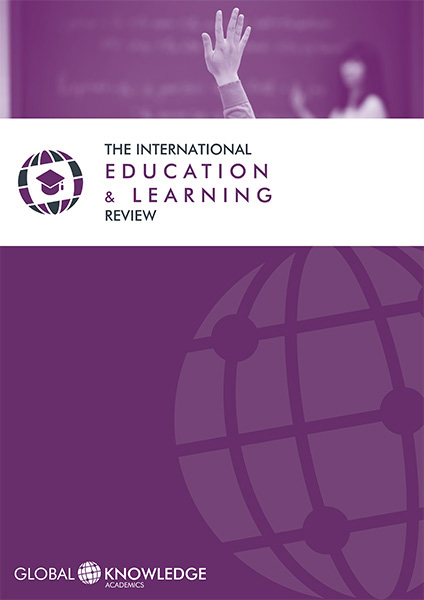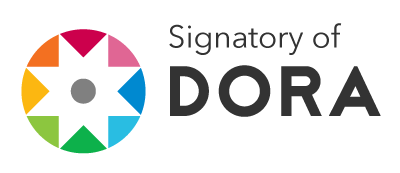A Data Analysis of Social Characteristics of Basic and Secondary Education Students in Ecuador
DOI:
https://doi.org/10.37467/gka-edurev.v1.1569Resumen
The objective of the study is to examine the social profile of Basic and Secondary Education students in Ecuador by means of a statistical analysis of this sector of the Ecuadorian population based on data from the National Survey of Employment, Unemployment and Underemployment from 2015. The variables investigated were: area, sex, age, language spoken, ethnic self-identification, condition of activity and inactivity, school enrollment, use of smartphone, use of computer during the last months, use of internet during the last 12 months, natural region, income poverty, occupational group and the level of happiness at work. The results of the study may be used as a tool for the development of the Basic and Secondary Education studies in Ecuador in accordance with the social profile and the needs of the students in the country.Descargas
Estadísticas globales ℹ️
|
351
Visualizaciones
|
1151
Descargas
|
|
1502
Total
|
|
Citas
Athanasiadis, I. (1995). Correspondence Analysis and Hierarchical Classification (pp. 51-56). Athens: New Technologies Editions.
Benzécri, P. (1992). Correspondence Analysis Handbook. New York: Dekker.
Castellano, J.M., Stefos, E. & Williams Goodrich, L.G. (2017). The Educational and Social Profile of the Indigenous People of Ecuador: A Multidimensional Analysis. Review of European Studies, Vol. 9, No. 1; 2017. pp. 137-147. doi:10.5539/res.v9n1p137
Colbert de Arboleda, V., Himes, J. & Mendez, E. (1994). Child Labour and Basic Education in Latin America. A proposed UNICEF Initiative. Florence: UNICEF. Obtained from https://www.unicef-irc.org/ publications/pdf/essay6_eng.pdf
Instituto Nacional de Estadística y Censos - INEC (2015). Encuesta Nacional de Empleo, Desempleo y Subempleo - ENEMDU, 2015. Quito, Ecuador.
Instituto Nacional de Estadística y Censos - INEC (2015). Trabajo infantil en Ecuador: Hacia un entendimiento integral de la problemá-tica. Quito, Ecuador: UNICEF. Obtained from: https://www.unicef.org/ecuador/ LIBRO-UNICEF-FINAL-BAJA.pdf
Instituto Nacional de Estadística y Censos - INEC (2006). Encuesta Nacional de Empleo, Desempleo y Subempleo - ENEMDU, 2006. Quito, Ecuador.
Kampouropoulou, M., Fokiali, P., Efstathiou, I., Koutris, T. & Stefos, E. (2015). Students’ Views on the Use of a Virtual Educational Museum. Review of European Studies; Vol. 7, No. 11; 2015. pp. 1-6. doi:10.5539/res.v7n11p1
Koulianidi, G. & Stefos, E. (2015). Consequences of Dietary Habits and Endocrine Disrup-tors in School Performance of Children Aged 10-12 in Greece. American Journal of Food Science and Nutrition, Vol. 2, No. 6, 2015, pp. 113-120.
López, N. & Tedesco, J. (2002). Challenges for Secondary Education in Latin America. In CEPAL Review 76. pp. 56-67. Obtained from
http://repositorio.cepal.org/bitstream/handle/11362/10862/1/76055068I_ en.pdf
Ministerio de Educación y Cultura del Ecuador - MEC (n/d). Hacia el Plan Decenal de Educación del Ecuador 2006-2015. Obtained from
http://webcache.googleusercontent.com/search?q=cache:JIHu2YkFAm YJ:www.oei.es/historico/quipu/ecuador/Plan_Decenal.pdf+&cd=1&hl=es&ct=clnk&client=firefox-b
Olivier, M. (2008). The analysis of quantitative data, Transl. Athanasiadis, I. (pp.86-88). Athens: Topos.
Orazem, P., Sedlacek, G. & Tzannatos, Z. (eds.) (2009). Child Labour and Education in Latin America. An Economic Perspective. New York: Palgrave MacMillan
Papapostolou, I., Papapostoulou, K. & Stefos, E. (2013). Educational Research. From Quali-tative to Quantitative analysis. p. 178. Rhodes: Evdimos Editions.
Papapostolou, I. & Stefos, E. (2013). Qualitative analysis on pedagogical research. Meth-odological approaches. In I. Papapostolou (Ed.), Educational activities. Teaching Interventions in Secondary Education. pp. 244-251. Rhodes: Evdimos Editions.
Rivers, B. (2010). Truancy: Causes, Effects, and Solutions. In Education Masters. Paper 107. St. John Fisher College, Fisher Digital Publications. Obtained from http://fisherpub.sjfc.edu/education_ETD _masters/107
Sarmiento Sarmiento, N.M., Paredes Proaño, A.M. & Stefos, E. (2016). Deaths by Suicide in Ecuador: A Quantitative Data Analysis. Review of European Studies, Vol. 8, No. 1; 2016. pp. 145-156. doi:10.5539/res.v8n1p145
Sistema de Información de Tendencias Educativas en América Latina - SITEAL of UNESCO (2001/2014). Perfiles de País. República del Ecuador. Buenos Aires: Argentina. Obtained from
http://publicaciones.siteal.org/perfiles-de-pais/21/republica-del-ecuador
Stefos, E. & Koulianidi, G. (2016). Nutrition Data Analysis Using R: Applications in Higher Education. Health Sciences Research, Vol. 3, No. 1, 2016, pp. 10-16.
Stefos, E. (2015). Causes of Death of Indigenous Ecuadorians. International Journal of Clinical Medicine Research, Vol. 2, No. 6, 2015, pp. 65-70.
Stefos, E. & Efstathiou, I. (2013). Quantitative analysis of the data of the School of Trianta during the period of 1906-1916. In I. Papapostolou (Ed.), Educational activities. Teaching Interventions in Secondary Education. pp. 29-57. Rhodes: Evdimos Edi-tions.
Stefos, E. & Papapostolou, I. (2013). Research Methodology. Processes and suggestions. p. 406. Rhodes: Evdimos Editions.
Stefos, Ε., Athanasiadis I., Gialamas, B. & Tsolakidis, C. (2011). The Use of New Technolo-gies and the Project Method in Teaching Statistics: A Case Study in Higher Educa-tion. HMS i JME, Volume 3. 2010-2011. pp.84-100.
UNESCO (2014). Regional Report about Education for All in Latin America and the Carib-bean. Global Education for All Meting Muscat, Oman, May 12th and 14th of 2014”. Santiago: Santiago Office, UNESCO. Obtained from
http://www.unesco.org/new/fileadmin/MULTIMEDIA/HQ/ED/ED_new/ pdf/LAC-GEM-2014-ENG.pdf
UNICEF (2011). Acerca de la obligatoriedad en la escuela secundaria argentina. Análisis de la política nacional. Obtained from
https://www.unicef.org/argentina/spanish/doc_final_30_08.pdf
Valdivieso, G., Stefos, E. & Lalama R. (2017). The Ecuadorian Amazon: A Data Analysis of Social and Educational Characteristics of the Population. Review of European Studies, Vol. 9, No. 1, March 2017. pp. 120-129. doi:10.5539/res.v9n1p120
Descargas
Publicado
Cómo citar
Número
Sección
Licencia
Los autores/as que publiquen en esta revista aceptan las siguientes condiciones:
- Los autores/as conservan los derechos de autor.
- Los autores/as ceden a la revista el derecho de la primera publicación. La revista también posee los derechos de edición.
- Todos los contenidos publicados se regulan mediante una Licencia Atribución/Reconocimiento-SinDerivados 4.0 Internacional. Acceda a la versión informativa y texto legal de la licencia. En virtud de ello, se permite a terceros utilizar lo publicado siempre que mencionen la autoría del trabajo y a la primera publicación en esta revista. Si transforma el material, no podrá distribuir el trabajo modificado.
- Los autores/as pueden realizar otros acuerdos contractuales independientes y adicionales para la distribución no exclusiva de la versión del artículo publicado en esta revista (p. ej., incluirlo en un repositorio institucional o publicarlo en un libro) siempre que indiquen claramente que el trabajo se publicó por primera vez en esta revista.
- Se permite y recomienda a los autores/as a publicar su trabajo en Internet (por ejemplo en páginas institucionales o personales), una vez publicado en la revista y citando a la misma ya que puede conducir a intercambios productivos y a una mayor y más rápida difusión del trabajo publicado (vea The Effect of Open Access).













